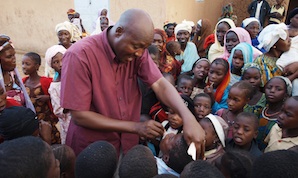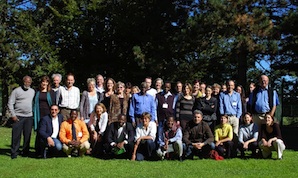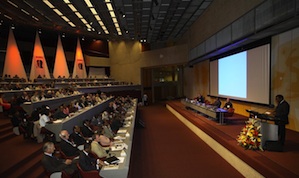Objectives

Winds of Hope is a recognized humanitarian public utility foundation whose purpose is to rescue child victims of war, disasters, diseases and conflicts. It focuses in particular on combating ignored or forgotten forms of suffering in such children.
Its primary objective is the elimination of noma. The Winds of Hope Foundation has therefore set itself the three following tasks:

Prevent
Address the root causes of the evil and so avoid treating the consequences
Implement simple prevention programs with a strong multiplier effect, i.e. :
• Give people in remote and disadvantaged areas some elementary hygiene education and basic health care,
• Provide mothers with nutrition counseling,
• Prevent imbalances that can lead to the appearance of noma
• Learn to recognize the early symptoms of the disease,
• Provide first aid that can halt the disease and
• Combat the entrenched beliefs that see noma as an untreatable curse
Prioritize Prevention
The approach taken by Winds of Hope is to attack noma before it manifests itself or at the first signs of the disease. All its activities are based on training community health workers, outreach in the villages, early detection and primary health-care treatment.
Prevention is the most effective way to fight noma, by mobilizing the entire population of a country with a minimum of resources. Once the disease reaches the necrotic stage, its victims become horribly disfigured. Repairing their faces will then require long, painful and expensive surgery, which in any case can only benefit a very small number of the victims. So the most effective action is further upstream, before the disease can attack tissues. There, the disease can be quickly stopped in its tracks, for the price of a few antibiotics.
Healing is a matter for specialists; prevention is everyone's business
The Foundation funds prevention programs that raise awareness in people living in extreme poverty, and provide training for local and community health staff. Its primary aim is not to replace governmental and humanitarian organizations working in the field, but to give these the resources to implement simple and inexpensive, high-leverage programs, that are accessible and useful to the greatest number.
Having one person in each village who can detect the earliest symptoms of noma means that the village is protected not only against noma but also against many other infections caused by poor hygiene and malnutrition. A health worker is therefore trained in each village who knows how to prevent and detect noma. He educates and trains the community and any existing health-care personnel in the prevention and early detection of noma, as well as in primary health care.
If you raise the awareness of people living in extreme poverty, you open the door to better hygiene and a balanced diet for village families. Such basic measures are very effective not only against noma but also against infectious diseases. Therefore, it is necessary to give large-scale encouragement to the national programs of the WHO and humanitarian organizations that are working in this direction.

Join forces
Form a chain fighting against noma
Gather together all those involved in the fight against noma to:
• exchange experiences
• harmonize practices
• develop synergies
• improve the efficiency of field work,
• speak with one voice to the authorities.
In 2003, the Winds of Hope Foundation created an International Federation called NoNoma to bring under one roof all the associations and humanitarian organizations fighting against noma. This Federation organizes and funds an annual general meeting and a roundtable that bring together some thirty associations and humanitarian NGOs.
Again in 2003, the Winds of Hope Foundation signed a 5-year partnership (renewed in 2010) with the World Health Organization’s Regional Office for Africa (WHO/AFRO) to finance national programs for the fight against Noma in six West African countries (Senegal, Mali, Burkina Faso, Niger, Mali, Benin and Togo). These programs are designed, validated, coordinated, implemented and evaluated as part of a tripartite collaboration between the Ministries of Health, WHO for Africa, and Winds of Hope, all of whom participate annually in an inter-country workshop.

Persuade
Publicize noma, mobilize international action
In 2008, Winds of Hope, in collaboration with the NoNoma Federation, organized the first international event dedicated to the child victims of this disease - Noma Day - a day devoted to science and information and held, with WHO’s support, on the sidelines of the WHO General Assembly. This successful event enabled the "face of poverty" to emerge from the shadows, and nearly 1 million Swiss francs to be collected for intensified prevention campaigns.
In March 2012, on the initiative of Winds of Hope and Mr. Jean Ziegler, the Council of Human Rights passed a resolution on the relationship between severe malnutrition, childhood diseases – in particular noma - and children’s human rights. The result is the first formal international recognition of noma as the positive marker of extreme poverty.
Bertrand Piccard and Brian Jones use their fame to mobilize the international community and the general public, as well as powerful political, financial and economic circles. This aspect consists of conducting outreach and advocacy for the elimination of noma, by means of public-speaking engagements and meetings with government authorities.







